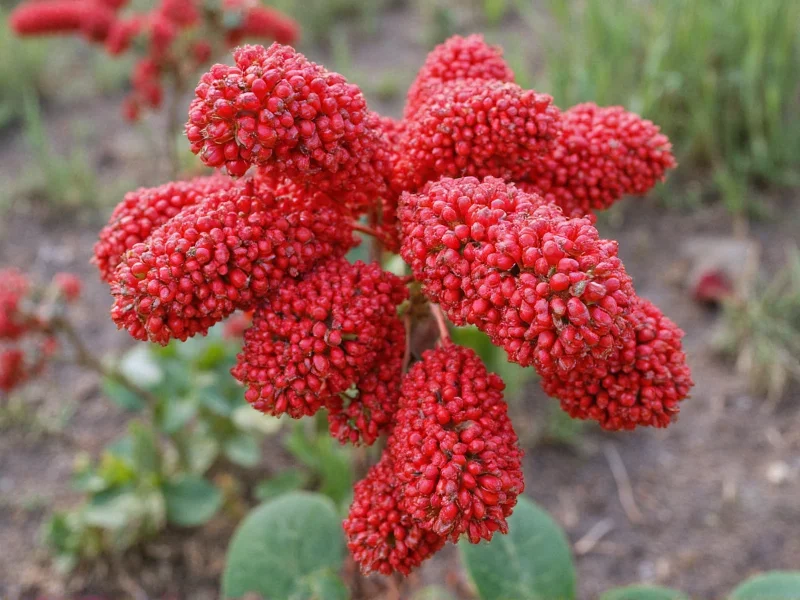When you're preparing a traditional Middle Eastern dish like fattoush salad or za'atar chicken and realize you're out of sumac, finding an appropriate replacement becomes essential. Sumac's distinctive tart, citrusy flavor with subtle earthy notes makes it challenging to replace with a single ingredient. Understanding what makes sumac unique helps identify the most effective substitutes for different culinary applications.
Understanding Sumac's Flavor Profile
Sumac (Rhus coriaria) is a deep red spice made from dried and ground sumac berries. Unlike many spices, sumac offers primarily tartness rather than heat or sweetness. Its pH level ranges between 2.5-3.0, giving it a bright acidity similar to lemon but with more complex earthy undertones. Professional chefs appreciate sumac for its ability to add brightness without the liquid content of citrus juices, making it ideal for dry rubs and spice blends.
When searching for natural sumac substitute for cooking, consider whether you need primarily the tartness, the color, or both qualities in your recipe. This distinction determines which alternative will work best for your specific culinary application.
Top Substitutes for Sumac in Various Applications
Not all sumac replacements work equally well across different dishes. The ideal alternative to sumac in middle eastern recipes depends on your specific cooking needs:
Lemon Juice and Paprika Combination
This is the most versatile substitute for most applications. The lemon provides the necessary acidity while paprika contributes both color and subtle earthiness. For every teaspoon of sumac required:
- 1 teaspoon sumac = ½ teaspoon lemon juice + ½ teaspoon sweet paprika
- For dry applications: 1 teaspoon sumac = ½ teaspoon lemon zest + ½ teaspoon paprika
This combination works particularly well as a sumac substitute for fattoush salad where both color and tanginess matter.
Vinegar-Based Alternatives
When you need acidity without additional liquid:
- 1 teaspoon sumac = ¾ teaspoon apple cider vinegar + ¼ teaspoon paprika
- 1 teaspoon sumac = ½ teaspoon white wine vinegar + ¼ teaspoon dried oregano
Vinegar substitutes work best in dressings and marinades but require careful balancing to avoid overpowering other flavors. This approach serves well as a quick sumac replacement for salad dressings.
Za'atar Blend
If your recipe already contains other Middle Eastern spices, using za'atar (which typically contains 15-25% sumac) can provide similar flavor complexity:
- 1 teaspoon sumac = 1¼ teaspoons za'atar (reduce other spices accordingly)
This works particularly well as a substitute sumac in za'atar recipes where complementary flavors already exist.
| Recipe Type | Best Substitute | Ratio (per 1 tsp sumac) | Special Considerations |
|---|---|---|---|
| Fattoush Salad | Lemon zest + paprika | ½ tsp zest + ½ tsp paprika | Add just before serving to maintain color |
| Meat Rubs | Dried lemon peel + paprika | ¾ tsp lemon peel + ¼ tsp paprika | Grind lemon peel to powder consistency |
| Hummus/Tahini Sauce | Lemon juice + paprika | ½ tsp juice + ½ tsp paprika | Add juice first, then adjust paprika |
| Rice Dishes | Vinegar + turmeric | ¾ tsp vinegar + ¼ tsp turmeric | Use mild vinegar like rice vinegar |
| Dry Spice Blends | Dried lemon peel + sumac-free za'atar | 1 tsp total substitute | Ensure za'atar doesn't already contain sumac |
Special Considerations for Specific Dishes
When replacing sumac in traditional recipes, understanding the dish's requirements helps select the most appropriate substitute:
For Middle Eastern Salads
Fattoush and other Levantine salads rely on sumac for both flavor and visual appeal. The best sumac substitute for fattoush salad maintains the characteristic red hue while providing balanced acidity. The lemon zest and paprika combination works best here, as liquid alternatives can make the salad soggy. Add the substitute just before serving to preserve the vibrant color.
For Meat Marinades and Rubs
Dry applications require substitutes that won't introduce excess moisture. Dried lemon peel processed to a fine powder provides excellent tartness without liquid content. For every teaspoon of sumac, use ¾ teaspoon dried lemon peel powder plus ¼ teaspoon paprika. This dry sumac replacement for meat rubs creates beautiful browning while delivering the characteristic tang.
For Hummus and Dips
When making traditional hummus or baba ghanoush, sumac adds both flavor and visual contrast. The ideal sumac substitute for hummus topping combines visual appeal with complementary flavor. A mixture of smoked paprika and lemon juice provides similar color contrast while enhancing the chickpea flavor profile.
Avoiding Common Substitution Mistakes
Many home cooks make these errors when seeking a natural alternative to sumac spice:
- Overcompensating with citrus - Using too much lemon juice can make dishes watery and overpower other flavors
- Ignoring color considerations - Sumac's distinctive red color contributes to dish presentation
- Using inappropriate vinegar types - Strong vinegars like distilled white can dominate delicate flavors
- Not adjusting other seasonings - When substituting, reduce other acidic components accordingly
Professional chefs recommend tasting as you go when using sumac alternatives. The ideal substitute sumac ratio for cooking often requires slight adjustments based on the specific recipe and personal preference.
Creating Your Own Sumac-Style Blend
For those who frequently cook Middle Eastern cuisine, creating a homemade sumac substitute blend provides consistent results. Combine these ingredients in a small jar:
- 3 parts dried lemon peel (finely ground)
- 1 part sweet paprika
- ¼ part dried thyme
- ¼ part ground coriander
Store this homemade sumac replacement blend in an airtight container away from light. It maintains quality for up to three months and provides a remarkably close approximation to authentic sumac's complex flavor profile.
When to Seek Authentic Sumac
While substitutes work well in many applications, certain traditional dishes truly require authentic sumac for proper flavor balance. Dishes like musakhan (Palestinian sumac-spiced chicken) or Iranian torshi (pickled vegetables) rely on sumac's specific chemical composition. For these authentic middle eastern recipes requiring sumac, seeking out genuine sumac through Middle Eastern markets or reputable online spice retailers delivers superior results.











 浙公网安备
33010002000092号
浙公网安备
33010002000092号 浙B2-20120091-4
浙B2-20120091-4